If you’re experiencing throbbing pain after your dental implant surgery, you’re probably wondering if this is normal or a sign of something serious. The good news? Throbbing pain is typically a normal part of the healing process, especially in the first few days after your procedure. Your journey to a better smile includes some temporary discomfort, but understanding what’s normal versus concerning can give you peace of mind during recovery.
Key Takeaways
- Throbbing pain is normal for the first 3-7 days after dental implant surgery as your body begins the healing process
- Pain should gradually decrease each day—if it worsens or persists beyond a week, contact your dentist immediately
- Proper pain management includes prescribed medications, ice therapy, and following your aftercare instructions
- Warning signs like severe swelling, fever, or pus require immediate dental attention
- Most patients experience significant pain relief within 5-10 days with proper care
Understanding Dental Implant Throbbing Pain Normal Recovery
When you receive a dental implant, your oral surgeon creates a small opening in your jawbone to place the titanium post. This surgical procedure naturally triggers your body’s healing response, which includes inflammation, increased blood flow, and tissue repair—all of which can cause that familiar throbbing sensation.
Think of this throbbing as your body’s way of saying, “I’m working hard to heal!” The increased blood flow to the surgical site brings essential nutrients and healing factors to help your implant integrate with your bone—a process called osseointegration.
What Makes the Pain Feel Like Throbbing?
The throbbing sensation occurs because:
- Blood vessels expand to deliver healing nutrients to the area
- Nerve endings become temporarily more sensitive
- Tissue swelling puts pressure on surrounding areas
- Your heartbeat becomes more noticeable in the healing tissue
Timeline: When Dental Implant Throbbing Pain Normal Expectations Change
Understanding the normal timeline for post-implant pain helps you know what to expect during your recovery journey:
Days 1-3: Peak Discomfort Period
- Throbbing pain is most intense during this time
- Pain level typically ranges from 4-7 on a 10-point scale
- Swelling reaches its maximum around day 2-3
- This is completely normal and expected
Days 4-7: Gradual Improvement
- Throbbing should noticeably decrease each day
- Pain becomes more manageable with over-the-counter medications
- Swelling begins to subside
- You should see steady progress
Week 2 and Beyond: Minimal Discomfort
- Only mild soreness should remain
- Throbbing pain should be completely resolved
- Normal activities can typically resume
- Your implant continues healing beneath the surface
“Most of our Dallas patients tell us the worst part is over by day 4, and they’re surprised how manageable the recovery becomes with proper care.” – Expert care, made simple.
Effective Pain Management Strategies
Managing your dental implant throbbing pain normal recovery doesn’t have to be overwhelming. Here are proven strategies to help you feel more comfortable:
Medication Management
- Take prescribed pain medications exactly as directed
- Don’t wait for pain to become severe before taking medication
- Combine prescription pain relievers with ibuprofen (if approved by your dentist)
- Set reminders to stay ahead of the pain
Ice Therapy Protocol
- Apply ice packs for 15-20 minutes at a time
- Use during the first 48 hours after surgery
- Take 15-minute breaks between applications
- This significantly reduces swelling and numbs pain
Rest and Elevation
- Keep your head elevated while sleeping
- Avoid strenuous activities for the first week
- Get plenty of rest to support healing
- Limit talking and jaw movement when possible
For comprehensive guidance on managing your recovery, check out our detailed dental implant aftercare instructions.
🦷 Dental Implant Pain Tracker
When Dental Implant Throbbing Pain Normal Becomes Concerning
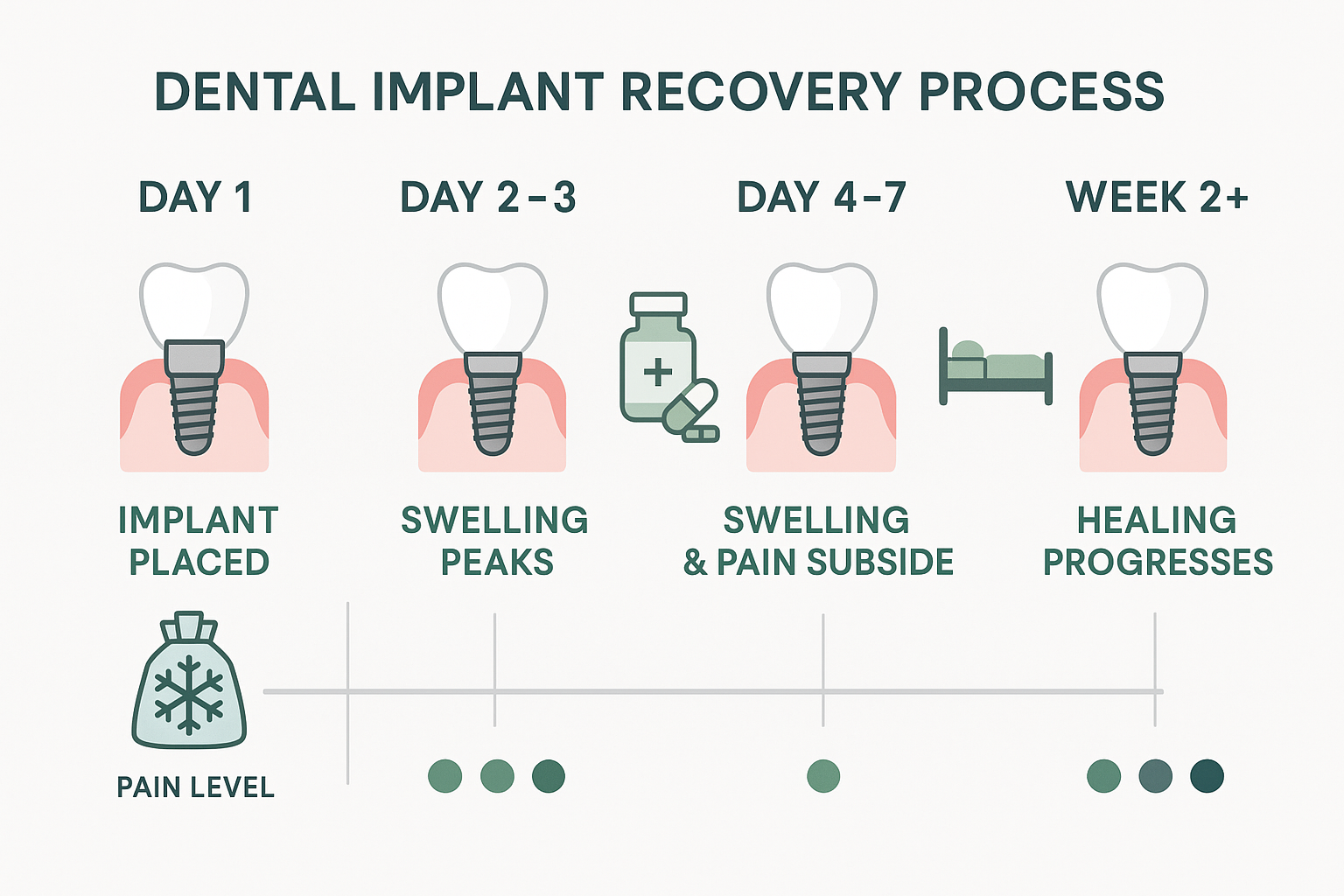
While throbbing pain is expected initially, certain signs indicate you should contact your dental team immediately. Trust your instincts—if something feels wrong, it's always better to check with your dentist.
🚨 Red Flag Symptoms
Severe or Worsening Pain After Day 5
- Pain that increases instead of decreasing
- Throbbing that becomes unbearable
- Pain that doesn't respond to prescribed medications
Signs of Infection
- Fever above 101°F (38.3°C)
- Pus or unusual discharge from the implant site
- Foul taste or odor in your mouth
- Red streaks extending from the surgical area
Excessive Swelling
- Swelling that worsens after day 3
- Difficulty swallowing or breathing
- Facial swelling that extends beyond the immediate area
If you experience persistent pain beyond the normal healing period, our article on dental implant pain after 6 months provides additional insights into long-term complications.
Factors That Influence Your Pain Experience
Several factors can affect whether your dental implant throbbing pain normal experience falls on the mild or more intense side of the spectrum:
Individual Pain Tolerance
- Previous dental experiences
- Overall health and healing ability
- Stress levels and anxiety
- Age and general fitness
Surgical Complexity
- Simple single implant: Generally less discomfort
- Multiple implants: May cause more widespread throbbing
- Bone grafting: Can increase pain duration
- Immediate placement: May have different pain patterns
Following Aftercare Instructions
Patients who carefully follow their dental implant aftercare instructions typically experience:
- Less severe throbbing pain
- Faster healing times
- Fewer complications
- Better overall outcomes
Natural Ways to Support Healing and Reduce Discomfort
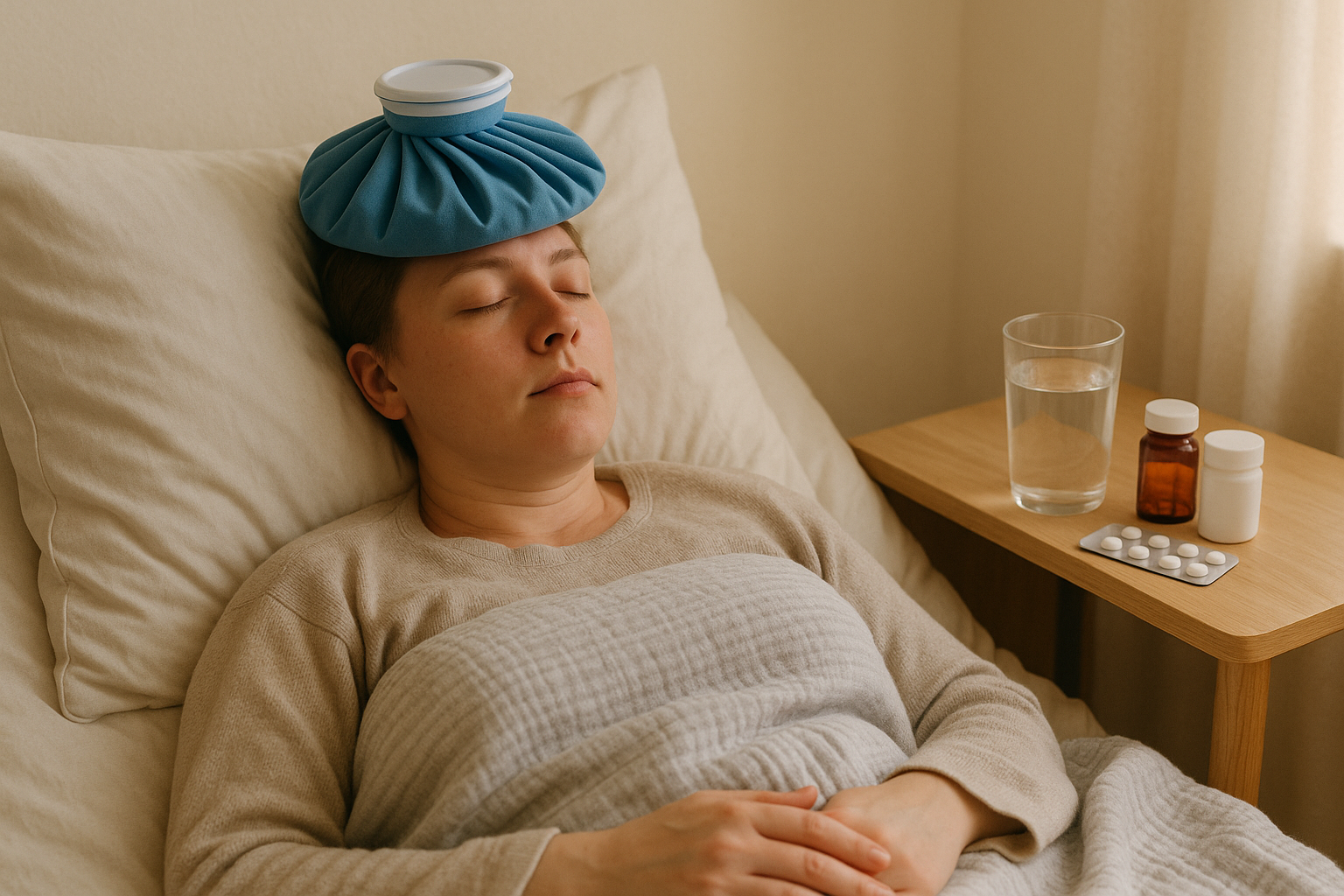
Beyond medication, several natural approaches can help manage your dental implant throbbing pain normal recovery:
Nutrition for Healing
- Soft, nutrient-rich foods like smoothies with protein powder
- Anti-inflammatory foods such as berries, leafy greens, and fatty fish
- Adequate hydration to support tissue repair
- Avoid alcohol during the first week (learn more about alcohol after dental implant surgery)
Gentle Oral Care
- Rinse with warm salt water (after 24 hours)
- Use a soft-bristled toothbrush around other teeth
- Avoid the surgical site when brushing initially
- Consider a water flosser designed for dental implants once healing progresses
Stress Management
- Practice deep breathing exercises
- Get adequate sleep to support healing
- Gentle meditation or relaxation techniques
- Light walking (avoid strenuous exercise)
The Science Behind Implant Integration and Pain
Understanding why you experience dental implant throbbing pain normal sensations helps put your discomfort in perspective. Your body is performing an amazing feat of biological engineering:
Osseointegration Process
- Initial healing (Days 1-14): Soft tissue heals around the implant
- Bone formation (Weeks 2-8): New bone cells begin growing toward the implant surface
- Integration (Months 2-6): Titanium implant becomes permanently fused with your jawbone
The throbbing you feel initially is your body's inflammatory response—a necessary part of this remarkable healing process. This discomfort is actually a sign that your body is working correctly to accept and integrate your new implant.
Comparing Recovery: What Other Patients Experience
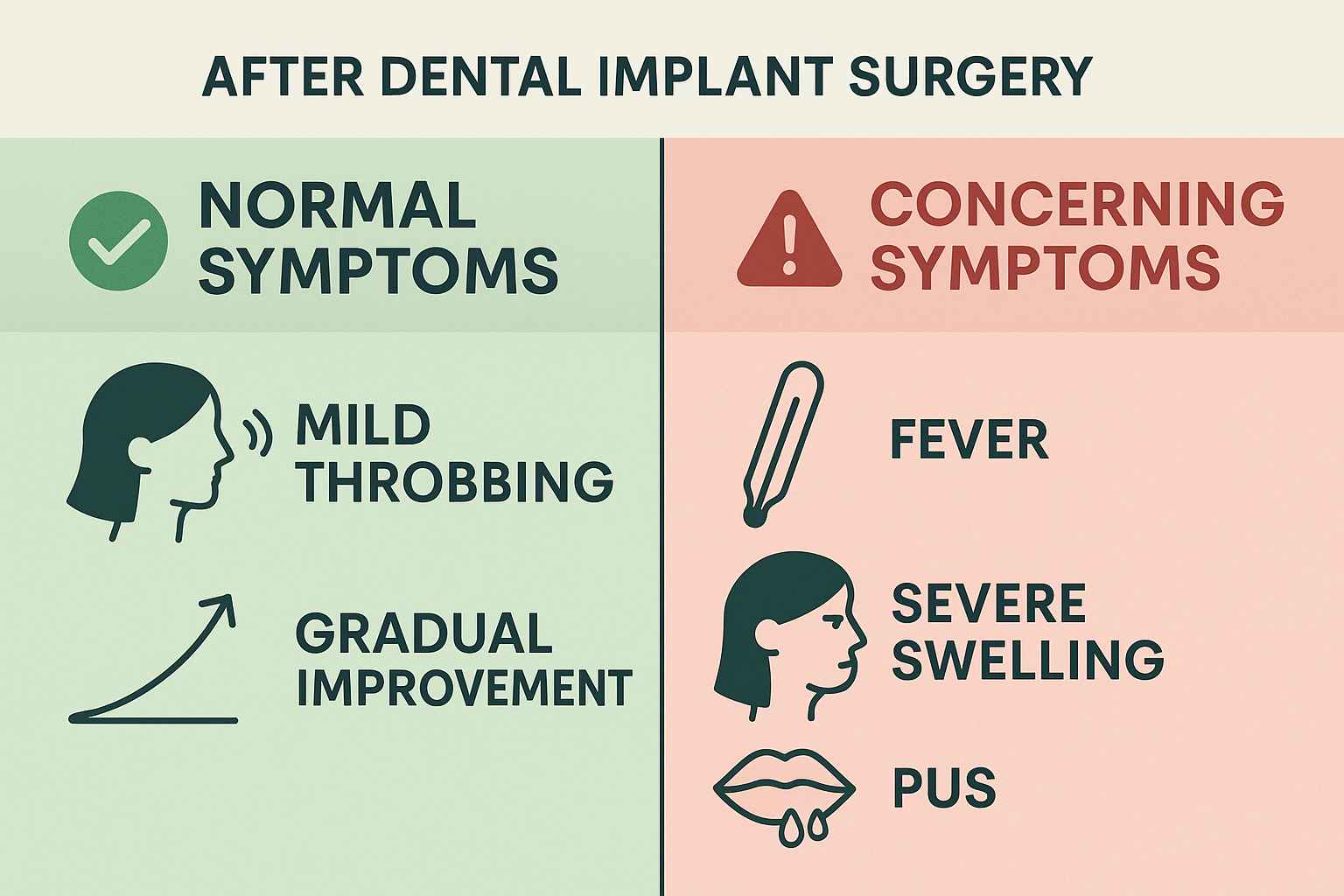
Most Dallas families we've helped through their implant journey report similar experiences:
| Timeline | Typical Experience | Pain Level |
|---|---|---|
| Day 1-2 | Moderate to strong throbbing | 5-7/10 |
| Day 3-4 | Noticeable improvement | 3-5/10 |
| Day 5-7 | Mild discomfort | 1-3/10 |
| Week 2+ | Minimal to no pain | 0-1/10 |
"I was worried about the throbbing on day 2, but by day 5, I felt so much better. The worst part really was over quickly, just like my dentist promised." - Sarah M., Dallas patient
Long-term Success and Pain Prevention
Your dental implant throbbing pain normal recovery is just the beginning of your journey to a confident smile. Here's how to ensure long-term success:
Preventing Future Complications
- Maintain excellent oral hygiene
- Attend regular dental checkups
- Don't smoke or use tobacco products
- Learn about preventing dental implant rejection
Protecting Your Investment
- Follow proper dental implant crown care once your restoration is placed
- Be aware of peri-implantitis symptoms and prevention
- Consider the long-term benefits when viewing before and after results
When to Contact Your Dallas Dental Team
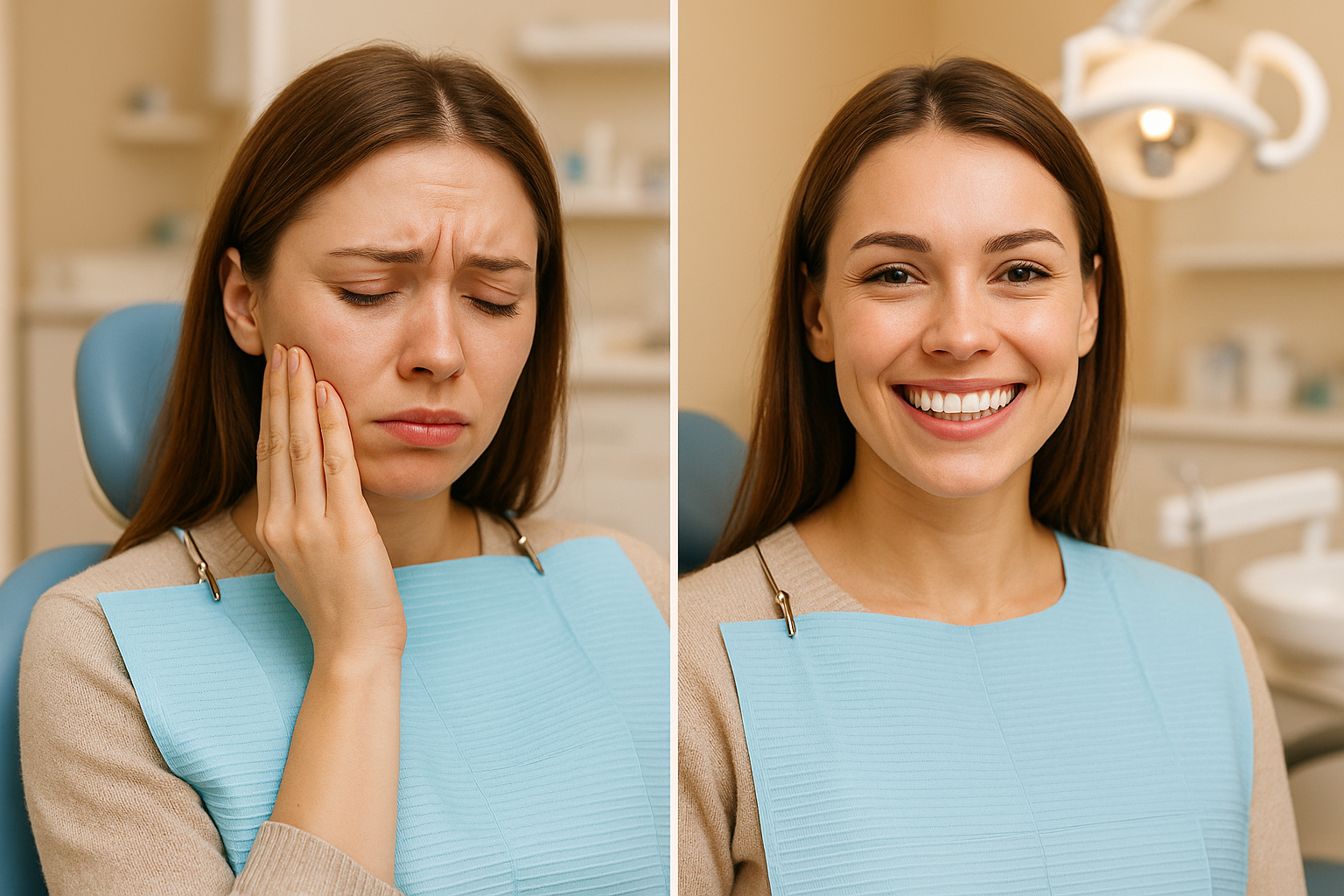
Don't hesitate to reach out if you have concerns about your recovery. We're here to support you through every step of your journey to a better smile. Contact us immediately if you experience:
- Pain that suddenly worsens after improving
- Signs of infection (fever, pus, bad taste)
- Bleeding that doesn't stop after 24 hours
- Numbness that persists beyond a few days
- Any concerns about your healing progress
Conclusion: Your Path to a Pain-Free, Confident Smile
Dental implant throbbing pain normal experiences are a temporary part of your journey to restored confidence and functionality. Remember that this discomfort typically peaks in the first 2-3 days and steadily improves from there. Most patients find that by day 5-7, they're feeling significantly more comfortable and excited about their healing progress.
Your smile deserves expert care, and we make the entire process—including recovery—as stress-free as possible. By following your aftercare instructions, taking prescribed medications as directed, and knowing what signs to watch for, you're setting yourself up for excellent long-term results.
Ready to take the next step in your dental implant journey? Contact our experienced Dallas team at Dental Implants Dallas TX for personalized care that puts your comfort and success first. We're here to help you achieve the confident, functional smile you deserve—with expert guidance every step of the way.

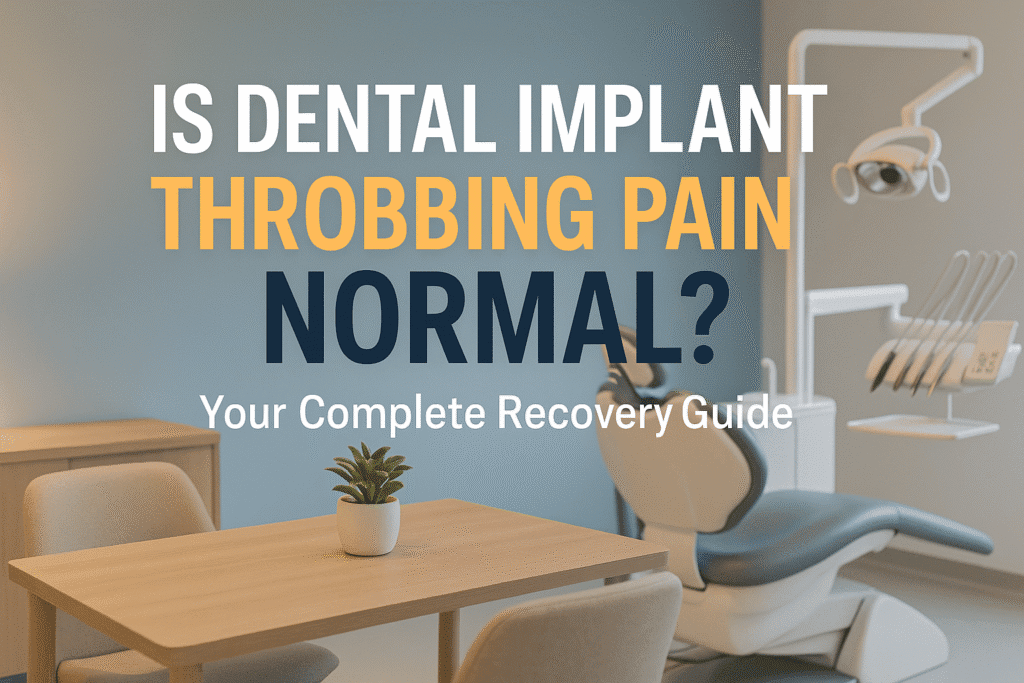
Leave a Reply
Share your thoughts or ask a question about dental implants. Your email address will not be published.